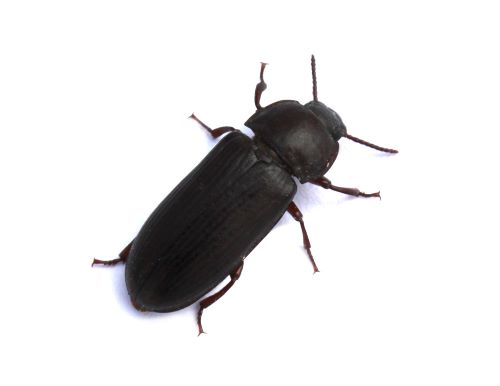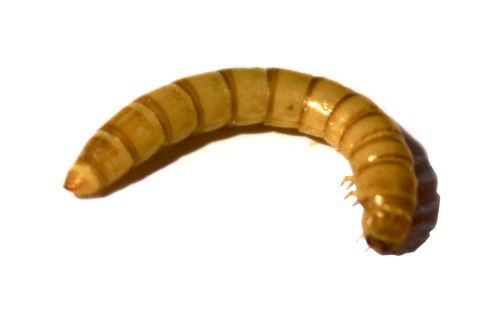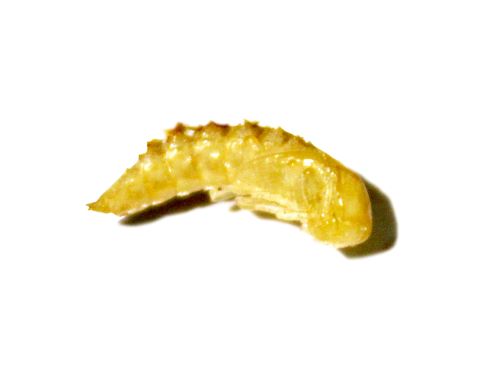
The larvae of the bark beetle are called Mealworms having their high nutritional value and are suitable feed for aquatic, animals and poultry. In this part, we will describe the life cycle and the uses of mealworms.
Dark beetle is the common name for the Tenebrionidae family. The number of species in the Tenebrionidae family is estimated to be more than 20,000 species
A dark beetle matures only a few days after hatching. During a 2-3-month lifetime, a female dark beetle can lay hundreds of eggs. The period from laying to hatching lasts 4 and 19 days. After the egg hatches, a small white larva comes out, which is hard to see at first. The life of the larvae lasts 54-90 days under optimal conditions. During their development period, the larvae shed skin up to 20 times and lose their exoskeleton during development. The last molt occurs about 3 months after hatching. After the larvae molt in the last place of residence; they form white shells around themselves and enter the pupal stage.
*Note: cannibalism behavior can be seen in the dark beetle, and for this reason, the immobility eggs and pupae may be eaten by the adult beetle and larvae.
Adult dark beetle (Tenebrio Molitor) 
Egg
Mealworm 
pupa 
Mealworms as feed for birds and poultry
Birds feed on mealworms both dry and live. Most bird species prefer alive mealworms; You can make them juicier and attractive by soaking dried
mealworms in water and attract birds for feeding. You can also mix mealworms with other bird snacks and food, as some birds like to eat creatively and have a different diet. Among the benefits of using mealworms for birds, the following can be mentioned:
Mealworms as an aquatic feed
Insects are a good food for aquaculture.
Freshwater aquatics are more adapted to feeding on insects than saltwater aquatics. The protein obtained from dark beetle larvae is most similar to fishmeal (which makes up the largest percentage of aquatic diets). It should be noted that the amount of fatty acid in insect flour is different compared to fish flour, and insects have higher proportions of omega-6 fatty acids and unsaturated fats. The use of live foods in the composition of the main rations can stimulate the appetite of fish. Dark beetle larvae are one of the live foods that are used in feeding ornamental fish in a very limited way. Larvae are suitable for almost all fish which size is more than 10 cm. Among the advantages of using mealworms in aquatic feed, the following can be different diet. Among the benefits of using mealworms for birds, the following can be mentioned:
*Note: Vegetable proteins such as soy are deficient in key amino acids required for carnivorous fish diets and contain anti-nutritional factors that limit digestibility
Mealworm as human food
Mealworms are used as human food in some countries because it is free from bacteria and pollution and also have high nutritional value Mealworm powder in combination with bodybuilding supplements has fans among athletes because of its high protein.
The use of Malorum as a source of chitin and chitosan
Chitin is the most abundant biopolymer after cellulose and has a great structural similarity with cellulose. Chitin and chitosan have wide applications in various industries, including medicine, tissue engineering, pharmacology, genetic engineering, wound dressing and repair, stem cells, papermaking, dentistry, production of eye lenses, textiles, production and packaging of food products, photography, purification Water and sewage, production of cosmetic and personal care products, production of hearing aids, etc. are used. Currently, the main natural sources of chitin are crab and shrimp shells. However, their availability is highly seasonal and their continuous production is difficult. With the global chitin and chitosan market expected to grow at an annual growth rate of 15.4%, it is important to find new sources to meet this growing demand sustainably. One of the most attractive options is the use of insects, especially edible worms. The extraction of chitin and chitosan from insects is more efficient than existing sources in terms of extraction methods, chemical consumption, time, and performance.
The researchers found that the chitosan obtained from Mealworm powder has a similar structure to commercial chitosan and has shown antimicrobial activity in several tests.